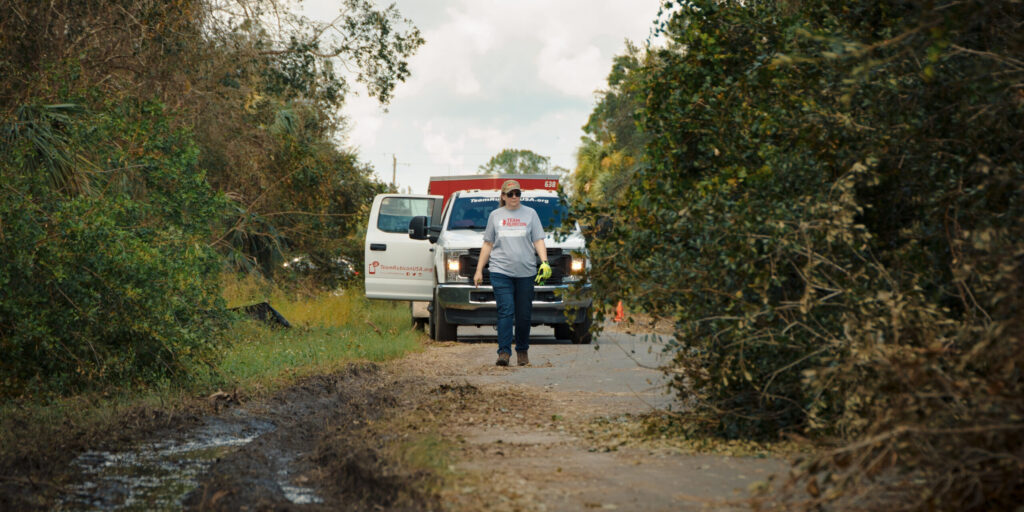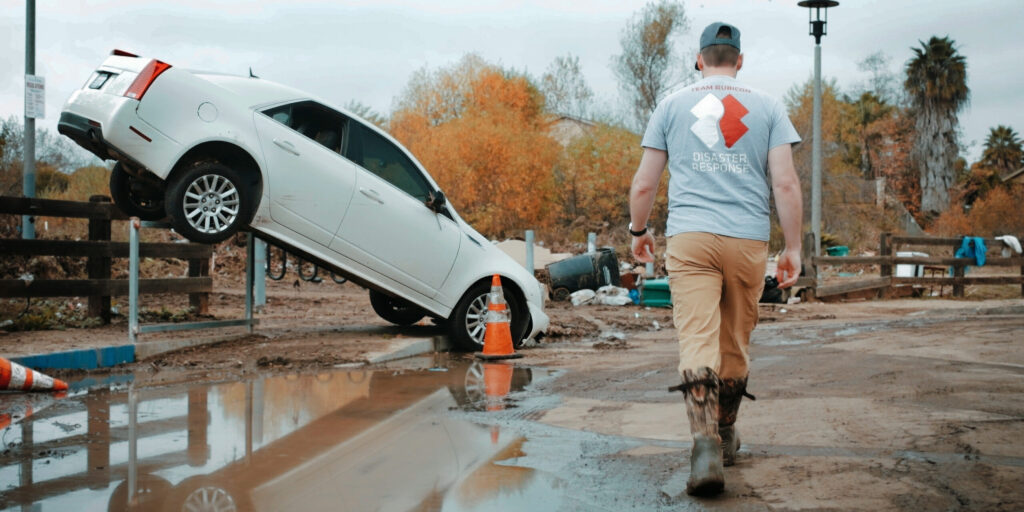In the U.S. last year, disaster relief nonprofits stood up thousands of response operations for hurricanes, tornadoes, flooding, and more. Getting such disaster relief operations spun up is complex and mostly invisible work. Volunteer leaders at organizations like Team Rubicon work diligently to place the right volunteers with the appropriate skill sets in the correct locations at the proper times. Such disaster response planning requires collaboration across multiple functions, relying on knowledge and expertise that start at the local level, from metro administrators with local contacts to agency executives who approve operations.
To get disaster response operations stood up, such leaders must possess intricate knowledge of emergency management systems, and spend significant time refining logistical and situational details, such as correctly communicating their plans to volunteer leaders and internal and external partners, like local emergency managers and other VOADs, or Volunteer Organizations Active in Disasters, working in the area.
They also meticulously plan logistics to support Forward Operating Bases, ensuring that the volunteers have everything they need to serve the community effectively, and also seeing to it that Team Rubicon operations do not end up costing the community or otherwise exacerbating existing problems.

“Speed-to-need is not driven just by the damage we see on the news,” says Team Rubicon Senior Associate for Operations Kate Amaral, who is regularly in charge of disaster response planning. “Speed-to-need is driven by Greyshirts who are connected to their communities.”
That speed-to-need informs a complex process for standing up a disaster response, one which begins with a disaster, moves through initial assessments and recon, and ends either in a decision not to stand up an immediate response—but to continue tracking in case a long term recovery or service project is warranted in the future—or to begin deploying Greyshirts to the field.
Out of the Disaster and Into ISR and WARNO
“The first step to an operation is the disaster, of course,” said Amaral. “Step two is the request for assistance.”
For Team Rubicon the disaster response planning process is triggered when a local emergency manager, elected official, or other authority reaches out for assistance. And it never sets up an operation without the active approval of and cooperation with the local community.
Once the call for assistance has been received, planning continues.
“Step three is the Initial Situation Report, or ISR. This is important because we may not send a response out to this community. But there needs to be a record of it,” says Amaral.
It’s during the ISR stage of disaster response planning that a Recon team is dispatched to evaluate the situation further. Is there need in the community? Can Team Rubicon address it? The Recon team answers critical questions about the disaster’s impact, Team Rubicon’s capabilities, and unmet needs in the area.

These ISRs are crucial for future reference and decision-making, such as identifying ongoing needs and determining appropriate responses. Sometimes, Greyshirts will even discover that the affected community is already inundated with support from other organizations. For this reason, Team Rubicon exclusively stands up disaster response operations only when there is unmet need.
“There could be a ton of VOADS there already,” says Amaral, “or there may not be any actual need for us, but we file that ISR to acknowledge that something happened because three months later we may get a call that an individual needs assistance.”
While Recon and the initial assessment may not warrant an immediate response operation, that may not be the end of it. “Maybe we set up a short-term service project later from that ISR, or even a long term recovery operation,” explains Amaral. If there is unmet need, however, Amaral and team jump into action.
Based on their findings, the disaster response planning team then moves the operation from ISR to WARNO. During WARNO, the team defines the skill sets needed to serve the community and the mobilization team issues a call to action to Greyshirt volunteers, often marking the first-time volunteers are aware of the community involvement.
“Greyshirts start to sign up. They’re getting excited. They’re putting in their availability.” Amaral says.
Local Situational Awareness Critical During Disaster Response Planning
While Greyshirt volunteers sign up and indicate their availability, an advanced echelon team, or ADVON, is sent to the community to prepare logistics, find locations for a FOB, and ensure the team remains self-sustaining and does not drain local resources. This preparation includes sourcing accommodation, organizing equipment, and integrating into the community. And, ensuring that the resources exist to host volunteers for a disaster response operation, or that they can be brought in from the outside so as not to burden an already overwhelmed community.
Team Rubicon volunteers, or Greyshirts, serve disaster-impacted communities because they want to make a difference; they need to help people in need. The last thing volunteers want is to negatively affect the communities they serve. To this end, Team Rubicon operations are fully self-sustaining and everything the volunteers will require is purchased locally or brought in from outside the impacted area.
To effectively reduce their reliance on possibly scarce or nonexistent resources—sometimes such things as drinking water and electricity—volunteer leaders need situational awareness of the community they’re planning an operation in, which means they need local people to help them. As a recent storm response to a late May spate of tornadoes in Kentucky shows, they often need creativity.

“The storms had happened maybe ten days beforehand,” recalls Amaral. “And Muhlenberg County was one of the last places to have power restored.” During the planning phase, a VOAD partner mentioned that the power outage was having a ripple effect: local food banks had run out of shelf-stable food during the disaster. And, without electricity, they were unable to replenish their stores.
Bringing in a group of disaster responders and then further depleting local stock to feed those volunteers would be an undue burden on the community and its resources. That’s why, when and where necessary, Team Rubicon brings in resources critical to an operation and the volunteer responders. For example, if the local grocery store doesn’t have food, the operation planners account for that and source foodstuffs from outside.
Getting Out of Disaster Response Planning and Into the Field with OPORDs
The final step in standing up an operation is the filing of an Operations Order, or OPORD.
“The OPORD is a really detailed handoff to the command and general staff,” says Amaral. “Here is this beautiful package that the mission planning team has put together. We need you, our volunteer leaders, and our volunteers to go forth and execute this on our behalf.”
All the while, Greyshirts are chomping at the bit, excited about the chance to get out in the field and begin serving disaster survivors.
“What people don’t see is the number of hours that volunteer leaders put behind the scenes to ensure that the volunteers with the right skills go to the right places, at the right time,” says Amaral. Which is just the way Amaral and team like it.



